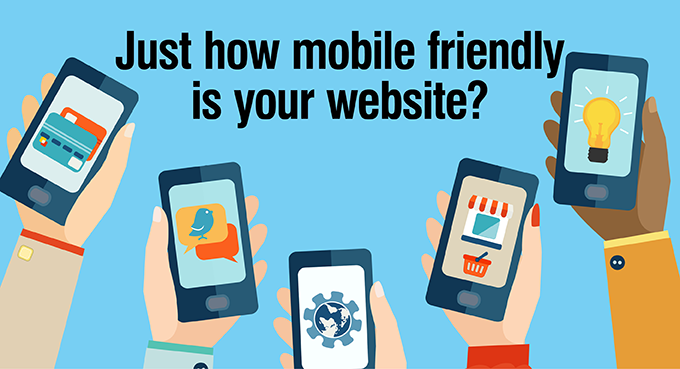Just How Mobile Friendly Is Your Website?
Towards the end of 2014, there was a flurry of excitement on the blogosphere when Google announced the launch of its Mobile-Friendly Test Tool. True to form, Google has made the test tool a doddle to use: simply type in your URL and the GoogleBot will analyse the site and let you know if your website has a mobile-friendly design. If your site get the thumbs up, then woohoo! Not only will you earn one of Google’s mobile-friendly tags but there are hints that Google is planning to give mobile-friendly sites more weight within its ranking algorithm providing a welcome boost for your site.
What if Your Site Fails?
If your website fails the test, don’t despair. The GoogleBot analyzer generates a mini-report which looks something like this. Here are four of the most common problems picked up by the GoogleBot Mobile-Friendly Test.
Text Too Small
Many smartphones have a screen the size of a playing card, so pay a thought to how your customers will read the text on your site without getting eye strain. It’s surprising how many websites have this problem, but luckily it’s an easy one to fix. Google has provided guidelines about legible font sizes – the recommendation is a base font size of 16 CSS pixels.
Links Too Small and Close Together
Mobile devices rely upon tap targets rather than mouse clicks. Small and tightly packed targets are a huge source of irritation to customers with clumsy fingers who jab at the screen, accidentally tapping links they have no intention of opening. Bear in mind that the average adult finger pad is reckoned to be around 10mm wide, and Google recommends a tap-target of at least 7mm. To find out more about how to fix the problem and pass the GoogleBot mobile-friendly test, visit the advice page on how to Size Tap Targets Appropriately.
Mobile Viewport Not Set
If your webpage looks fine on your desktop, but all screwy on a mobile, it is likely that there is a problem with the viewport. This controls the width and scale of a webpage on different devices, so it is very important to make sure that it is configured. If you’ve never heard of a viewport before, Google provides an excellent explanation on its guidance page Configure the Viewport.
Content Wider Than Screen
The GoogleBot Test Tool checks to make sure that users don’t have scroll sideways or zoom to view the content on your site.Visitors to your website are unlikely to bother with content that falls outside the edge of the screen, so the advice from Google is clear: Make it Responsive.
The Way Forward: Responsive Web Design
To fix the problems and create a flexible layout to suit all screen sizes on a range of devices from a smartphone to a mega-screen TV, Google recommends using Responsive Web Design (RWD). This may sound like a daunting challenge, so if the task is beyond your capabilities it’s worth seeking advice from a professional designer.
Don’t miss out: deliver a mobile-friendly website your customers will return to time and again.
